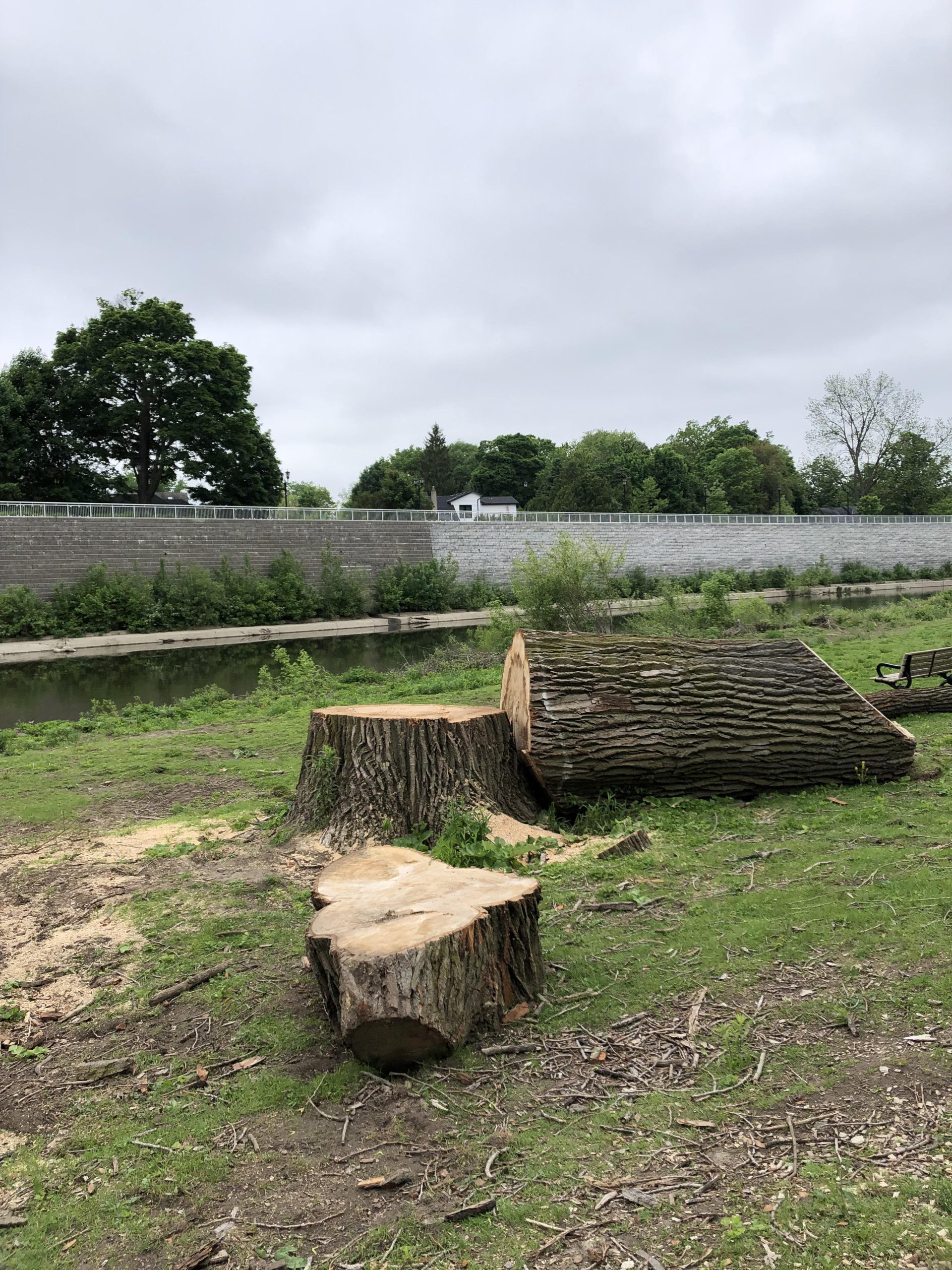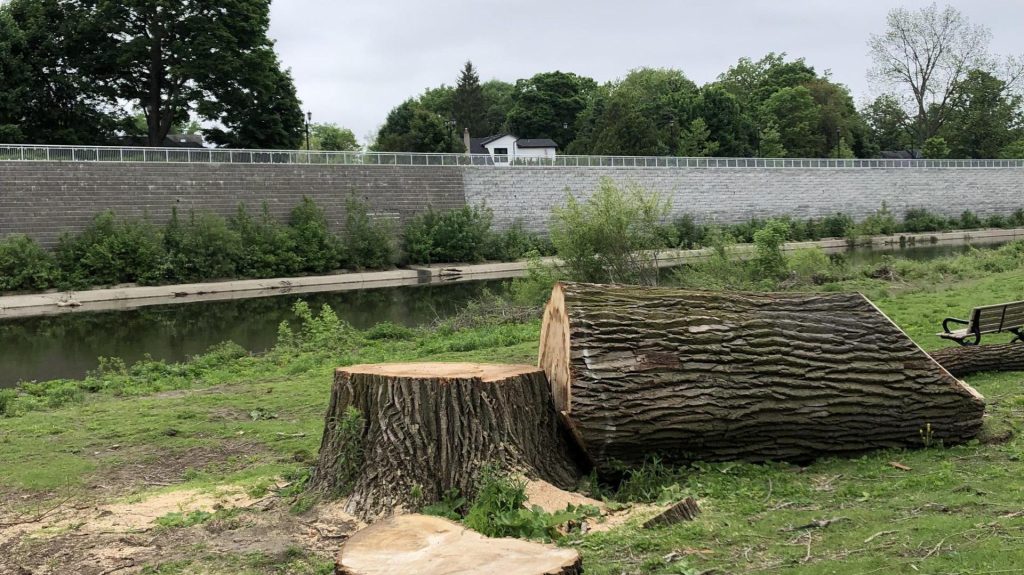If you’ve walked through Harris Park recently and wondered where all those towering trees went, you’re not alone. The sight of dozens of massive stumps where century-old giants once stood has left many Londoners scratching their heads and asking questions online.

The tree removal is actually the first phase of an ambitious shoreline restoration project that’s been in the works for years. According to information posted near the museum between the two bridges, the city has big plans for transforming this stretch of the Thames River waterfront.
Those impressive trees that dominated the park’s landscape? They were primarily cottonwoods, some potentially nearly 100 years old. While cottonwoods are technically native to the Carolinian zone that extends into Ontario, many of the removed trees were actually invasive species like Norway maples that had taken root over the decades.
The timing of the tree removal raised eyebrows among locals who noticed the cutting happened months before any construction began. But there’s actually a method to what might seem like madness – environmental regulations require tree removal to happen before March, when birds start nesting season. Even though construction wouldn’t begin until July, the city had to act early to comply with wildlife protection guidelines.
Some of the trees genuinely needed to go for safety reasons. Several showed signs of heart rot and structural instability that could have posed serious risks to park visitors. At their age and with decades of exposure to flooding and weather, some had simply reached the end of their natural lifespan.
The shoreline restoration project isn’t just about removing old trees – it’s part of a comprehensive flood control and erosion management initiative. Harris Park sits in a flood-prone area along the Thames, and the annual spring flooding has been taking its toll on both the landscape and infrastructure for years.
The restoration plans call for more than doubling the amount of vegetation that was previously there, but with native species better suited to the local ecosystem. Think sycamores and blue beech trees that can actually thrive in the specific conditions along the Thames River corridor.
The project addresses a long-standing issue that’s been decades in the making. The shoreline has been gradually deteriorating, and the 2024 flood waters came dangerously close to reaching the museum level, highlighting just how urgent this restoration work has become.
While the current landscape might look pretty stark with all those stumps, the city’s vision involves creating a more resilient and environmentally appropriate green space. The new plantings will be specifically chosen to handle the flooding cycles that are a natural part of life along the Thames.
Not everyone is thrilled with the execution, though. Some locals have expressed frustration with what they see as a heavy-handed approach, arguing that a more gradual transition could have preserved the park’s beauty while still achieving the restoration goals.
The project also includes infrastructure improvements designed to better manage water flow and reduce the impact of annual flooding events. This isn’t just about aesthetics – it’s about creating a more sustainable relationship between the urban park space and the natural river system.
For those who grew up with these massive trees as a backdrop to countless park visits, the change is definitely jarring. The cottonwoods and other large trees had been fixtures in the park for generations, creating shade and defining the character of this beloved green space.
The restoration timeline means Londoners will have to be patient as the new ecosystem takes shape. Young trees obviously can’t provide the same immediate impact as the mature giants they’re replacing, but the long-term environmental benefits are expected to be significant.
Detailed information about the Harris Park shoreline restoration project is available through the city’s Get Involved platform, where residents can learn more about the specific goals and timeline for the work.
The discussion around the tree removal has sparked broader conversations about urban planning, environmental stewardship, and how cities balance preservation with necessary infrastructure improvements. The debate reflects the challenge many growing cities face when trying to maintain green spaces while adapting to changing environmental conditions.
Local residents have been sharing their thoughts and concerns through various online discussions, with many expressing hope that the final result will justify the dramatic changes currently underway at one of London’s most cherished parks.

